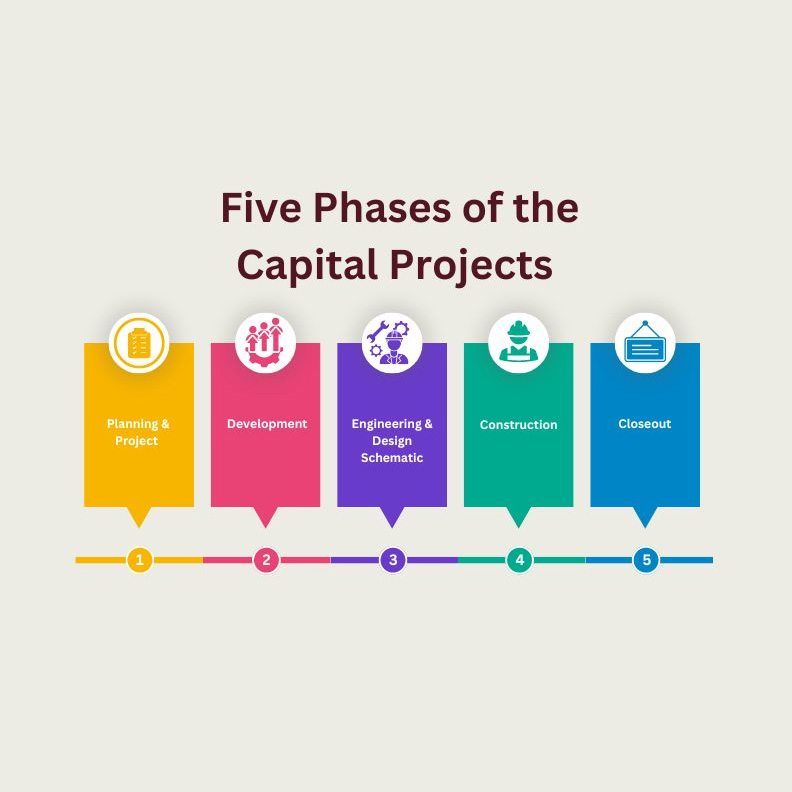The requirement for a Capital Improvement Program Readiness Audit (CIPRA), while not universally mandated, is of paramount importance to ensure transparency, efficiency, and fiscal accountability. Unlike standard financial audits that primarily examine monetary transactions, a CIPRA delves deeper into all aspects of a program. This includes not only the financial elements, such as budget, cash flow, and cost estimates, but also crucial operational aspects, like program controls, resource allocation, schedule management, contract compliance, stakeholder engagement, and procurement.
By integrating these multiple facets, the Capital Improvement Program Readiness Audit provides a comprehensive, multidimensional review of the entire bond program. This kind of audit checks the robustness of the program controls and verifies that the mechanisms for resource allocation are functioning optimally to avoid project delays and cost overruns. It scrutinizes the master schedule to ensure realistic timelines are set and met, and evaluates contract compliance to prevent potential legal and financial risks. Additionally, it assesses the stakeholder engagement plan to guarantee transparency and manage expectations, while reviewing procurement processes to ensure fairness and competitiveness.
Above all, the importance of a CIPRA lies in its role as a sentinel, safeguarding public interests by reinforcing accountability and enhancing operational efficiency. For organizations managing capital improvement bond programs, it serves as a vital instrument for monitoring and optimizing project execution. A Capital Improvement Program Readiness Audit exemplifies a commitment to fiscal responsibility and public trust, upholding the organization’s duty to its citizens and ensuring the successful delivery of the infrastructure projects that are integral to community development.
The following sections present an analytical dissection of its key elements:
- Financial Evaluation: A thorough examination of the financials, including budget, cash flows, and cost estimates, is foundational. The goal is to identify whether allocated funds are being optimally used, to predict future cash flows, and to validate the accuracy of cost estimates.
- Program Controls Assessment: An evaluation of the controls in place for executing the infrastructure projects is critical. This involves a review of the control systems, governance structure, and processes designed to prevent or detect divergences from the agreed plan and specifications.
- Resource Leveling Evaluation: The audit looks into the mechanism of resource allocation and leveling. Ensuring a well-structured, balanced distribution of resources can mitigate project delays and avoid cost overruns.
- Master Schedule Oversight: The audit reviews the master schedule for the program, considering the reasonableness of timelines and confirming that all critical milestones are clearly identified and tracked.
- Contract Compliance Review: This involves a check on adherence to contractual terms and conditions by all parties involved. It ensures that procurement laws and regulations are complied with, mitigating legal risks and potential financial losses.
- Stakeholder Engagement Plan Analysis: The audit assesses the plan for engaging key stakeholders. This element is crucial for ensuring transparency and managing expectations of all parties involved, from taxpayers to local government officials.
- Procurement Process Review: Procurement is a key part of the process, often representing a significant proportion of the project cost. The audit ensures that procurement policies are adhered to and that the process is competitive, fair, and transparent.
In a landscape where the public’s demand for transparency, accountability, and efficient use of resources is increasing, a CIPRA for Capital Improvement Bond Programs has never been more essential. This comprehensive, multidimensional tool ensures financial responsibility and operational efficiency. It methodically assesses the robustness of program controls, efficiency of resource allocation, realism of schedules, adherence to contracts, effectiveness of stakeholder engagement, and competitiveness of procurement processes. Thus, it provides a detailed roadmap for organizations, aiding them in monitoring and optimizing project execution while bolstering public trust.
In the final analysis, adopting a Capital Improvement Program Readiness Audit underscores an organization’s commitment to uphold its fiscal responsibility towards its citizens. It ensures the successful delivery of infrastructure projects integral to community development. The CIPRA, therefore, is not just a procedural necessity but an emblem of public trust and accountability. It reinforces an organization’s dedication to safeguarding public interests and demonstrates its resolve to maximize every dollar spent, ensuring that capital improvement bond programs truly serve as catalysts for sustainable development.
At Front Line Advisory Group, we are pioneers in Capital Improvement Bond Management, leveraging unparalleled expertise and deep industry insights. Our mission extends beyond consultation – we empower our clients to realize the full potential of their investments, ensuring tax dollars are put to maximum use through astute Program Management Consulting. For more information or to commence your journey towards transformative bond management, reach out to us at info@frontlineadvisorygroup.com













